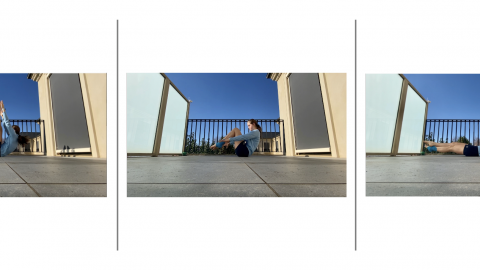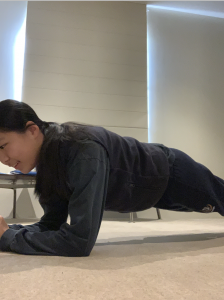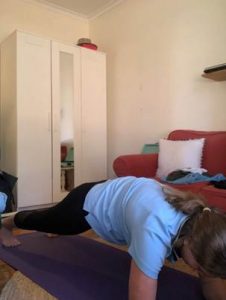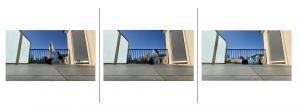Health and Physical Education Learn@Home: Australian Movement Guidelines Program

Given the resounding feedback from students after our Learn@Home trials at the end of Term 1, their desire to be physically active and spend time away from the computer screen was articulated quite strongly. The Health and Physical Education (HPE) Faculty felt it was crucial to include physical activity and movement into our Term 2 Curriculum, despite being physically separated from our students.
With the support of Year 7 – 10 parents, who universally agreed to supervise their daughters in their Health and Physical Education lessons, the HPE Faculty determined that it was safe to deliver opportunities for students to be physically active in a section of all three of their HPE lessons per 10-day cycle.
Through exploration of the Australian 24-hour Movement Guidelines for Youth, our goal was for all students in Years 7 – 10 to achieve 60 minutes of moderate to vigorous physical activity every day. After trialling different online workout sessions and reflecting on their experiences, students were supported to develop their own 7-minute muscle and bone strengthening workout and a 20-minute cardio-workout, to increase and maintain fitness levels as well as develop health and physical activity literacy. 
Students were introduced to key terminology utilised in the Guidelines, acquiring an understanding of different methods of determining physical activity intensity levels. Methods explored included looking at the relationship between the intensity of the physical activity and the percentage of their maximum Heart Rate achieved. Simple techniques such as Borg’s Perceived Level of Exertion Scale also became familiar, and utilised to increase student understanding and their ability to accurately gauge how hard they were working.
 Each Unit of work was designed to meet the requirements and abilities specific to the year level, with the degree of complexity and academic rigour increasing from Years 7 to 10. Year 7 and 8 focused on enhancing Health Literacy in relation to physical activity, Year 9 on Fitness Components and Year 10 on the contribution of the body’s three energy systems, to their ability to perform physical activity of different duration and intensity. Additionally, the program presented students with the scaffolding to identify opportunities to exercise, schedule and improve their own personal physical activity plan and activities, in accordance with their needs and interests.
Each Unit of work was designed to meet the requirements and abilities specific to the year level, with the degree of complexity and academic rigour increasing from Years 7 to 10. Year 7 and 8 focused on enhancing Health Literacy in relation to physical activity, Year 9 on Fitness Components and Year 10 on the contribution of the body’s three energy systems, to their ability to perform physical activity of different duration and intensity. Additionally, the program presented students with the scaffolding to identify opportunities to exercise, schedule and improve their own personal physical activity plan and activities, in accordance with their needs and interests.
Current health research and the worrying trend of increasing lifestyle diseases (Obesity, Diabetes, 17 different cancers and Mental Health Disorders) are powerful motivators for maintaining a proactive and relevant Physical Education program, in conjunction with developing the health literacy to enable participation in life-long health-promoting behaviours. The decisive and positive student feedback from the Learn@home Australian Movement Guidelines Unit was very affirming. It reflected our students’ enthusiastic and committed involvement in a wide variety of physical pursuits, that will hopefully continue into the future; thus, working to turn the tide on lifestyle disease trends.
A sample of student feedback below:
“I’m really liking PE and Health classes, where you get a chance to get away from the screen and do your own choice of physical activity”. Sarah Marriott
“I just liked choosing what I wanted to do and being able to plan them and be physically active”. Holly Landrigan
“I liked learning the theory aspects of Heart Rates and Borg Exertion Scale information and being able to apply it to my own workouts – so I know at what stage I am at in the workout, and how hard I am working.” Georgia Stoupas
“I liked having free choice in choosing what you wanted to do. I don’t usually like doing Cardio, but when we did Just Dance to be a great substitute for actually doing Cardio and I really liked it.” Cassy Lie



